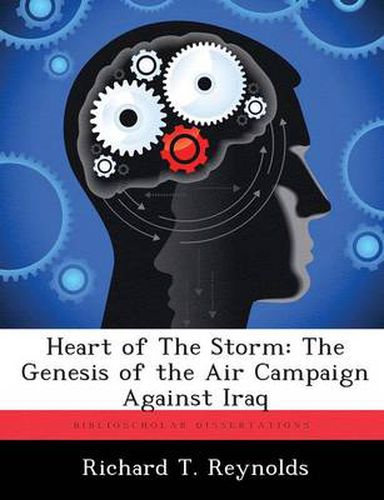Readings Newsletter
Become a Readings Member to make your shopping experience even easier.
Sign in or sign up for free!
You’re not far away from qualifying for FREE standard shipping within Australia
You’ve qualified for FREE standard shipping within Australia
The cart is loading…






This title is printed to order. This book may have been self-published. If so, we cannot guarantee the quality of the content. In the main most books will have gone through the editing process however some may not. We therefore suggest that you be aware of this before ordering this book. If in doubt check either the author or publisher’s details as we are unable to accept any returns unless they are faulty. Please contact us if you have any questions.
Airmen all over the world felt relief and exhilaration as the war in the Gulf reached its dramatic conclusion on 28 February 1991. Many nonairmen, of course, experienced those emotions as well-but for a variety of different reasons. Airmen, long uneasy about the lingering inconclusiveness of past applications of their form of military power, now had what they believed to be an example of air power decisiveness so indisputably successful as to close the case forever. Within the United States Air Force, among those who thought about the uses of air power, there were two basic groups of airmen. The first-smaller and less influential-held to the views of early air pioneers in their belief that air power was best applied in a comprehensive, unitary way to achieve strategic results. The second-much more dominant-had come to think of air power in its tactical applications as a supportive element of a larger surface (land or maritime) campaign.
$9.00 standard shipping within Australia
FREE standard shipping within Australia for orders over $100.00
Express & International shipping calculated at checkout
This title is printed to order. This book may have been self-published. If so, we cannot guarantee the quality of the content. In the main most books will have gone through the editing process however some may not. We therefore suggest that you be aware of this before ordering this book. If in doubt check either the author or publisher’s details as we are unable to accept any returns unless they are faulty. Please contact us if you have any questions.
Airmen all over the world felt relief and exhilaration as the war in the Gulf reached its dramatic conclusion on 28 February 1991. Many nonairmen, of course, experienced those emotions as well-but for a variety of different reasons. Airmen, long uneasy about the lingering inconclusiveness of past applications of their form of military power, now had what they believed to be an example of air power decisiveness so indisputably successful as to close the case forever. Within the United States Air Force, among those who thought about the uses of air power, there were two basic groups of airmen. The first-smaller and less influential-held to the views of early air pioneers in their belief that air power was best applied in a comprehensive, unitary way to achieve strategic results. The second-much more dominant-had come to think of air power in its tactical applications as a supportive element of a larger surface (land or maritime) campaign.